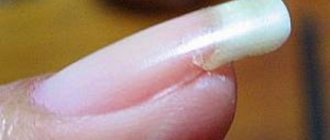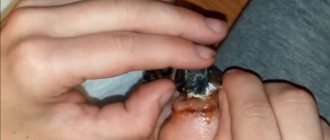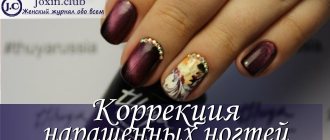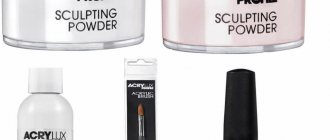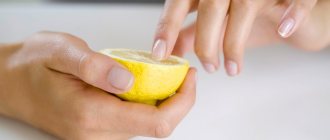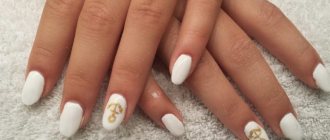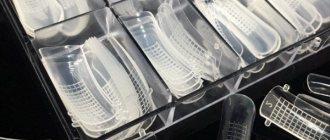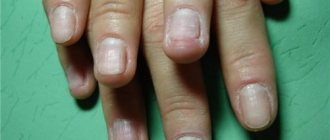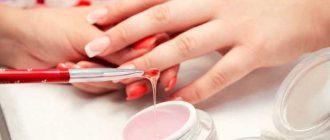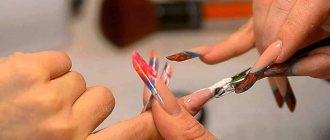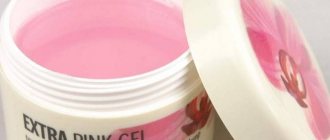Tuesday February 25th, 2020
2889
Sterilization of manicure tools is one of the most important stages of performing a manicure. Neglecting the rules of disinfection and sterilization can affect the health of both the master and the client.
After a manicure, tools usually contain skin particles, bacteria, and infections. Untreated instruments can transmit serious diseases, including hepatitis or HIV.
Sterilization and disinfection of instruments is primarily aimed at preventing the transmission and infection of the client with a bacterial or viral infection, fungus or other disease that is transmitted by contact.
A master who does not comply with the rules for sterilizing instruments puts not only himself and the client at risk, but also the work of the business as a whole. After all, in case of infection, the salon will bear responsibility.
Also, for any manicurist, his professional tool is extremely important, which should always be clean, sharp and ready for work. This is the second functional task of properly processing a manicure tool - to extend its service life.
In this article we will look at the stages of sterilization of manicure instruments and tell you how to properly process manicure instruments.
We also recommend reading the article “Automate, you can’t have mercy: Save 90 hours a month by managing a beauty salon with Beauty Pro CRM”
Treating hands with antiseptic
Before performing a manicure, you must disinfect your hands and the client’s with a disinfectant. To do this, you can use the following antiseptics: Neosteril, Octenisept, Bacillol, Sterillium, Kutasept F, Eco-breeze. They come either in sprays or in containers with dispensers.
The product is applied to dry hands and distributed evenly over the skin. It is important to carefully work on the inside and back of the hands, the areas between the fingers and around the nails. After this, it is recommended to wear disposable latex or rubber gloves.
Next, the client’s hands are treated with an antiseptic. Use hand sanitizer twice if there is a risk of contracting hepatitis B or tuberculosis.
Recommendations for antiseptic treatment
- The antiseptic is taken from the dispenser into the recess of the palm
- Nails should be clean and cut short
- When working, it is necessary to remove rings, bracelets, watches
- When applying antiseptic, the skin of your hands must be dry.
- It is recommended to use an antiseptic with components to restore the lipid layer so that the skin does not dry out excessively and is less susceptible to injury and cracking.
- The antiseptic is rubbed into the skin of the hands until completely dry.
Disinfection of manicure instruments - the first stage of treatment
Disinfection is the destruction of bacteria, viruses, fungi and any other microorganisms from working manicure tools and surfaces. It is the first stage of processing. There are three of them: disinfection , pre-sterilization cleaning and the final one – sterilization .
For disinfection in salons and when professionals work at home, a chemical method is used. It is based on the use of special disinfectants in the form of solutions, tablets, and aerosols.
They should have a wide spectrum of effects, which includes antifungal and antiviral effects. The products can be purchased ready-made, or the concentrate can be diluted in the specified ratio.
The ratio is different for each disinfectant, so you must follow the instructions or recommendations of SanPiN. Good disinfection liquids should contain anti-corrosion additives.
Containers with ready-made and prepared solutions must have lids and stickers with the name of the disinfectant, concentration and date of preparation during storage.
Each salon or home technician chooses for himself which disinfectant to use. There is also a list of drugs recommended by SanPiN.
Features and choice of ultrasonic washing
How does a UV sterilizer work?
This sterilizer works using a bactericidal ultraviolet lamp built inside.
Technically, it is possible to replace the light bulb in the device. The replacement period depends on the intensity of use. The approximate range ranges from 6-12 months.
The germicidal ultraviolet lamp can cope with bacteria, viruses, mold, mildew and spores.
In modern models, instead of a light bulb, bactericidal ultraviolet ice diodes are built in. They have a significantly longer service life. Approximately 50 thousand hours of continuous illumination.
It is important to know: this device is not designed for 100% disinfection. Since the sterilizer cannot cope with the Hepatitis virus or HIV. The UV sterilizer is designed to maintain absolute disinfection of instruments.
The UV sterilizer is absolutely safe. When you open the box, the UV light automatically turns off. When the box returns to its original closed position, the light automatically turns back on.
Means for disinfecting manicure instruments when working at home and in beauty salons
After performing a manicure or pedicure, disinfection is the first stage of treatment. Let's look at the most popular options for disinfectant solutions and concentrates. The higher the price of the product, the safer the composition for metal tools is considered.
Before disinfection, all instruments or devices are opened, complex mechanisms are untwisted and immersed in the solution.
It is necessary to ensure that there are no air bubbles or voids left on the surfaces that would prevent the penetration of the product.
Gigasept AF – intended for disinfection of manicure and medical instruments. The prepared solution can be used within 7 days. If it changes color, you need to prepare a new one and discard this one.
Gigasept AF can also be used for pre-sterilization cleaning, the second stage of processing. In this case, after soaking the equipment in the solution, it is enough to rinse it under running water for 10 minutes and additionally immerse it in distilled water for 1 minute. Instruments must be completely dry before sterilization.
Korzolex Plus - can also be used for two stages, disinfection and cleaning before sterilization. The untwisted instruments are lowered into the solution prepared according to the instructions, and the recommended disinfection time is maintained. Then cleaning with a brush is carried out in hard-to-reach places and rinsing with running and distilled water.
After preparation, the solution is recommended for use for no more than 5 days. Both the first and second products can be used in ultrasonic washing baths with metal containers.
Alaminol is a broad-spectrum disinfectant concentrate. The finished solution can be used for no more than 10 days or until the appearance changes. Suitable for use in ultrasonic installations. Dilute strictly according to the instructions, wearing gloves.
Details about choosing a disinfectant:
How to choose a disinfectant, review of the best
Why is it recommended to use a UV sterilizer?
Manicure or pedicure is a very complex process.
In the process of creating an aesthetically attractive appearance of hands, the master directly influences the client’s nails and skin. During the manicure process, especially if it is complex and labor-intensive, damage to the integrity of the skin may occur. As a result, various microbes and bacteria instantly penetrate the human body, causing diseases.
Consequences of unsterilized instruments:
- bacterial infections;
- skin inflammation;
- fungus;
- more severe diseases.
Various security methods of the last century are irrevocably outdated. No master should use boiling or simply rinsing tools in water as cleaning.
Objective experts recognize that the highest quality and most reliable cleaning method is undoubtedly an ultraviolet sterilizer.
Step-by-step instructions for disinfecting manicure tools
Please note that disinfection of manicure instruments is carried out immediately after completion of the procedure. They cannot be washed with water, wiped, or brushed off anything with a brush, so that skin residues and other particles or components do not rise into the air or splash with running water on you and in the room.
The disinfection procedure is carried out in 3 successive stages:
- All tools are disassembled and untwisted
- Placed in a pre-prepared bath or disinfection unit with the selected solution
- The time recommended for disinfection with each specific solution is maintained.
The liquid must cover the instruments to 2 cm above them for proper processing. Any manipulations with disinfectant solutions are carried out wearing protective gloves. For practical use and economy, it is better to choose a disinfectant that can also be used for pre-sterilization cleaning. She is the next stage.
Pre-sterilization cleaning of manicure instruments - the second stage of processing
After the period of exposure of the instrument to the disinfectant has expired, it is removed from the solution and cleaned using regular or brass brushes, as well as cotton pads under running water for 10 minutes. Not only dirt and small particles are washed away, but also the disinfectant itself, which damages the instruments with prolonged exposure.
The recommended washing time can vary from 1 to 10 minutes, see the instructions for the drug. After cleaning instruments under running water, it is recommended to place them in distilled water for a minute to neutralize any remaining disinfectant solution.
The first and second stages can be combined in two cases:
- Chemical disinfection and cleaning, where a disinfectant solution simultaneously dissolves dirt and particles. All that remains is to rinse everything and dry it before sterilization.
- Disinfection and cleaning in an ultrasonic cleaner. The combined effect of the solution and vibrations allows you to fully prepare the instruments for sterilization. After exposure, we also rinse everything with running water.
Disinfection and pre-sterilization cleaning of manicure instruments: how to choose a disinfectant and prepare the solution correctly
Sterilization of manicure instruments - the third stage of processing
The purpose of sterilization is the complete removal of all microflora remaining after the previous stages of processing.
There are several options for sterilization - thermal, chemical, steam, quartz. According to SanPiN, temperature and pressure treatment in a dry-heat oven, autoclave or infrared sterilizer are considered the most effective.
For commercial purposes, only sterilizers that have a registration certificate from Roszdravnadzor are allowed to be used in beauty and manicure salons. This applies to sterilizers of any type.
A sterilizer that has such a certificate is included in the State Register of Medical Devices of the Federal Service for Surveillance in Healthcare. You can check the availability of any sterilizer in this registry on the website https://www.roszdravnadzor.ru/services/misearch. Be sure to check sterilization equipment before purchasing.
Here we have described which dry roasts have a registration certificate and which do not.
How to sterilize manicure instruments in a dry heat oven
Dry instruments, after disinfection and thorough cleaning, are placed in special craft bags with color indicators and then sent to the cabinet. If there are no craft bags, you can unfold the tools with tweezers. Sterilization occurs due to exposure to high temperature, from 121 to 180 ° C for 30 minutes.
This sterilization option is also suitable for processing cutters used in hardware manicure.
How to sterilize instruments in an autoclave
The installation is more expensive than a dry-heat oven and is suitable for large salons or clinics. Sterilization occurs due to exposure to steam and high temperature from 121 to 137 ° C under a pressure of 1.5-2 atmospheres. Lasts 20-30 minutes. Distilled water is used.
The full cycle of operation of the autoclave includes: heating-sterilization, cooling of the instrument. The whole process will take about 50-55 minutes.
The advantage of an autoclave is the ability to process any products and manicure tools. Compared to a dry-heat oven, a number of materials that are destroyed by high temperatures cannot be placed in it.
For autoclave processing, paper or plastic bags are used. Plastic ones are transparent, cost a little more, but keep the instrument sterile longer.
According to SES standards, when sterilizing with an autoclave, a sterilization quality log must be kept. To fill it, test strips are purchased, which are placed on bags or inside bags with instruments during each sterilization. After the processing cycle, stickers with color indicators about the quality of the procedure are transferred to the journal.
How to keep logs of quality control of PSO and concentrations of working solutions according to SanPiN
According to the European standard, autoclaves are divided into 3 classes:
- Class N
- Class S
- Class B
Category N devices are not recommended for nail salons, as packaging cannot be used in them. They process all-metal objects without planes and channels, as well as fabric. These models do not have preliminary vacuumization and drying, so the bags turn out wet after sterilization. There can be no question of any further storage of wet Kraft bags.
Autoclaves of categories S and B can be used for work in a salon or nail salon. They provide vacuumization and drying, and you can process tools in bags.
The full cycle of operation of the autoclave includes: heating-sterilization, cooling of the instrument. The whole process will take about 50-55 minutes.
Autoclave - features, choice and operating rules
Infrared sterilizer
There are only two models of infrared sterilizers approved by Roszdravnadzor on the market:
- ST-IK RELMA;
- ST-IK MAI.
The price of each is about 50,000 rubles. Processing in devices occurs under the influence of a temperature of about 200 degrees, but since this is infrared radiation, the metal does not deteriorate.
ST -IK RELMA provides packaging. It is reusable and expensive. Also included is a stand for cutters.
Processing is extremely fast: 10 minutes for packaged and 6 minutes for unwrapped instruments. The packaging remains sterile for 1 day.
For the infrared sterilizer, it is also necessary to maintain a Quality Log. 1st class indicators are glued to the bags. They connect the packaging lid to the main part. One indicator is enough for one.
There are also 5th class indicators for infrared sterilizers. They are inserted directly into the packaging, and after processing they are pasted into the magazine.
Choosing an infrared sterilizer - review of models
for the ST-IK MAI . Instruments are processed open and must then be used immediately or stored in sterile boxes, a sterile cabinet or a UV sterilizer.
Chemical sterilization
A method carried out using special solutions. Must be performed under sterile conditions using sterile containers, rags, and tweezers for contact with instruments. Conditions must be created for further sterile storage. The result is valid for 3 days. It is not always effective in everyday life in nail salons, however, it is the best backup option if all conditions of the procedure are met.
Chemical sterilization of manicure instruments: rules according to SanPiN
Quartz, ball or glasperlene sterilizer
It has both pros and cons. Pros:
- rapid sterilization under high temperature, takes 20 seconds
- mobility – convenient to use by one specialist in the salon, at home and on the road
- possibility of sterilization of cutters for hardware manicure.
Minuses:
- incomplete immersion of the instrument into the treatment area (balls), and as a consequence the risk of re-spread of pathogenic microflora
- The operating temperature of the device does not always correspond to the declared one, which leads to incomplete sterilization
- the need to replace balls every six months, which many craftsmen are not aware of
- rapid wear of cutting parts due to frequent contact with hard balls.
Properties of glasperlene sterilizer and rating of the best
- Ultrasonic sterilizer , despite its name, is intended for the first two stages - disinfection and pre-sterilization cleaning.
- The ultraviolet sterilizer is intended only for storing already sterilized instruments.
Types and manufacturers of UV sterilizers
Specialized websites and retail chains are ready to offer a large range of models of UV sterilizers from various manufacturers. Among the well-proven ones can be named:
- MiniGer is a small-sized model designed for storing all types of instruments in a sterile condition;
- Germix SB-1002 is a device that is suitable for disinfection and storage of manicure and hairdressing supplies;
- UV Germix - a two-chamber box used for sterilization and storage of a complete list of hairdressing and manicure instruments, can be used to store several sets;
- New Germix-2 is a new model with increased power of one of the chambers, which allows you to simultaneously disinfect and store hairdressing and manicure tools.
Among the main factors that distinguish the variety of models and affect their cost are:
- design:
- number and volume of chambers;
- lamp power;
- dimensions;
- belonging to a particular brand.
Well-known manufacturers of modern sterilization equipment for the beauty industry are:
- CERIOTTI (Italy);
- PlanetNail (China, Germany);
- Mirage (China);
- Image Inventor (Russia).
Processing of manicure instruments according to SanPiN
To sterilize instruments in a nail salon, you can use several types of sterilizers, which are permitted according to SanPiN 2.1.2.2631-10, SanPiN 2.1.3.2630-10:
- Dry heat cabinet
- Infrared sterilizer
- Autoclave
- Glasperlene sterilizer
To store already sterilized open instruments, you can use a UV sterilizer; they will remain there for up to 3 days; then it is recommended to repeat the procedure. Manicure tools are placed in it open on perforated trays. According to SanPiN standards, manipulations are performed with gloves.
Clause 9.22 of the SanPiN standards for a nail salon or office requires sterilization and storage of consumables and instruments in sterilization packaging materials or craft bags. If sterilization is performed without packaging, then the instruments should be reused within an hour or stored on special perforated trays in closed UV sterilizers for up to 3 days.
An ultrasonic sterilizer is used to clean and disinfect instruments after a manicure or pedicure. After ultrasonic cleaning, the instruments must dry and undergo heat treatment in an autoclave or dry-heat oven.
The sterilization procedure according to SanPiN takes place in three stages prescribed by the SES:
- After performing a manicure or pedicure, all instruments are soaked in a disinfectant solution in accordance with the exposure time and concentration recommended by SanPin.
- After disinfection, instruments undergo pre-sterilization mechanical cleaning under running water using brushes or brushes, depending on the hardness of the surface being treated. Processing time under running water is from 2 to 10 minutes. This is necessary in order to remove not only the remaining protein particles on the surface, but also to thoroughly rinse off the disinfectant solution, which can cause corrosion during further sterilization at high temperatures.
Pre-sterilization cleaning can be carried out together with disinfection using a mechanized method using a device, for example, an ultrasonic cleaner.A removable tray with a disinfectant solution is placed inside the device, the instruments are immersed, and the recommended treatment time is set for each specific model. On average it is 2-10 minutes.
- Sterilization in a dry-heat oven or autoclave is performed for dry instruments that have undergone disinfection and pre-sterilization cleaning. They are laid out on special trays and placed in a cabinet or autoclave for the recommended time. It is set depending on the selected temperature and can vary from 20 to 90 minutes.
More detailed information on sterilization standards for nail salons and offices can be found in the documents that can be downloaded:
- SanPiN 2.1.2.2631-10
- Changes and additions to SanPiN dated June 10, 2021
- SanPiN 2.1.3.2630-10
In 2021, SanPiN standards for disinfection and sterilization have not changed. Learn more about the requirements of SanPiN and SES standards for the manicure salon in general, as well as for nail technicians.
Clause 9.21 also prescribes the need for at least three standard manicure sets per master’s workplace. This is necessary in order to ensure uninterrupted disinfection and sterilization with a dense flow of clients. The standard set is approved for each salon individually by the administration of the institution. The administration must also appoint an employee responsible for disinfection and sterilization who has undergone preliminary training. This is stated in paragraph 9.26 of SanPiN 2.1.2.2631-10.
Dry-heat cabinet: processing and sterilization of instruments according to SanPiN
Sukhozhar, along with a glasperlene sterilizer, are the most popular devices for sterilizing manicure instruments in salons and by craftsmen at home.
A dry-heat cabinet is an electrical device that exposes a manicure tool to high temperatures - from 160 to 220°C. Depending on the set temperature, the exposure time to dry air also changes. At 180-220°C – 30 minutes, at 170-180°C – 90 minutes, and at 160-170°C – 150 minutes.
These data may vary slightly from model to model, so you should read the instructions before using the device. There are also temporary SanPiN standards for different types of material and tools.
It is important to consider the time it takes to warm up the cabinet itself to the desired temperature. It can last from 5 to 10 minutes, and then the sterilization time begins to count down. On many models this is indicated by a colored indicator light.
The processing algorithm in a dry-heat oven is as follows:
- The instruments are placed in a tray or tray and sent to the chamber. When using Kraft bags, they are first packaged in bags and then placed on a tray or tray;
- Close the lid and set the processing time and temperature;
- After completing the procedure and turning it off, it is necessary to allow time to cool down, and then remove the sterilized material and place it in storage or reuse it.
Only parts made of heat-resistant metal that can withstand temperatures from 180 to 220°C are sterilized in a dryer and autoclave.
According to SanPiN standards, a dry-heat oven, like other types of sterilizers, must be certified for use in Russia, have a passport, instructions in Russian and a maintenance guarantee. Only models approved by the Ministry of Health are allowed for use in the salon.
It is mandatory to have a purchase and sale agreement for equipment and an invoice.
The average device has dimensions of no more than 45 cm. According to SES standards, it must be installed on a flat surface with a distance of 8 cm from the front edge, 10 cm from the back wall with the electrical wire and on the sides, and 30 cm from the top. It is not necessary to allocate space for a dry heat special table.
Sukhozhar - types, choice, use of a sterilizer
Rating of dry heat sterilizers
The main stages of disinfection and sterilization of manicure instruments in a beauty salon
Compliance by the master with all three processing steps gives the client confidence and protection against infection. Below are instructions for sterilizing manicure instruments.
Pre-sterilization treatment
The first step is disinfection and removal of mechanical contaminants found on cosmetic devices. The best way is to treat manicure instruments in a sterilization container with alaminol or any other special product.
Alaminol is an antiseptic solution for sterilizing manicure instruments. Kills viruses and bacteria. In manicure, an 8% solution is used in the form of a concentrate.
Stages of processing with alaminol:
- manicure accessories are placed in a plastic container;
- the alaminol solution is poured into a container with accessories for 15 minutes;
- Dry the instruments on a dry and clean cloth.
Sterilization
The process is carried out using special equipment. Dry-heat oven, UV container, autoclave, gasperlene sterilizer - each salon independently chooses the processing method.
Manicure accessories must be sterilized strictly in a dry state. Be sure to dry them after the first step.
Recommended articles on this topic:
- Where to buy nail files
- How to choose a manicure set for a beginner master
- Professional pedicure files
Storage
The last step is additional sterilization and storage. To do this, you will need an ultraviolet sterilizer in the form of a cabinet, which will protect the instruments from bacteria and viruses and ensure sterility until they are used by the master.
The UV sterilizer takes up little space, is quite easy to use, and is safe for the technician thanks to special protection against UV radiation.
The box for sterilizing manicure instruments is designed for storing any accessories, both metal and non-metal. You can place brushes, nail files, buffs and wooden sticks in it.
Manicure equipment is often packaged in special bags. There are several varieties of them:
- Kraft bags.
They are sealed with paper clips and allow you to keep accessories sterile for three days. Kraft bags for sterilizing manicure instruments can be purchased at a specialized store.
- Sealed bags.
Provide sterility for 20 days.
- Paper bags with thermal sealing.
The period during which the instruments will be sterile is a month.
Read the material on the topic: How to choose a manicure set for a novice master
